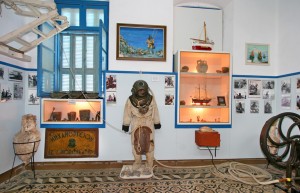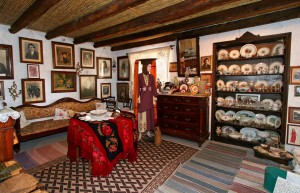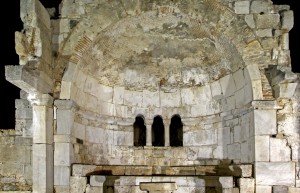Archaelogical Museum of Kalymnos
-
Built in Pothia, in the center of the island’s capital, the new Archaeological Museum of Kalymnos was launched in 2009 and hosts ever since the “Lady of Kalymnos.” This great work of Hellenistic bronze sculpture depicts a woman with her body covered with a fringed tunic and a robe. It emerged unexpectedly from the Kalymnian sea in 1995, as it was caught into the nets of a local fisherman. It was then moved to Athens and after many months of conservation works, the “Lady” was exhibited in the National Archaeological Museum. Now, “she” is the premier exhibit of the Archaeological Museum of Kalymnos. Other exhibits include antiquities from the Prehistoric and Post-Byzantine era, presenting thus timelessly the island’s history over millennia. At the same time, the plurality of sculpted offerings found in the Temple of Delian Apollo and also a huge statue of Asclepius impress every visitor.
Admission: €3. Opening times: Tuesday – Sunday, 09:00-18:00


Marine Life and Findings Museum
This is a private museum, a life’s work of Valsamidis brothers, who were born and live in Kalymnos. Their love for the sea and the willingness to share its joys and wealth with other people, lead them build this museum with enormous personal effort and enthusiasm. The result of their work will impress you. The findings, which have been collected after thousands of divings in the sea all around the world, include almost anything that can be found on the seabed; fish, shells, shellfish, starfish, corals, sharks, turtles and tortoises, and of course all kinds of sponges. Part of the museum is dedicated to the profession of sponge collectors. In these rooms you will see the tools and diving suits that were used by scuba divers from 1872 until today. In a separate wing findings of the WWI and WWII are exhibited, such as torpedoes, pieces of planes etc while in a specially designed area jars of 6th, 4th, 3rd and 2nd BC century are being kept.
Admission: €3. Opening times: Monday – Sunday, 09:00-19:00
Maritime Museum of Kalymnos
The Maritime Museum of Kalymnos was founded in 1994. It presents the naval tradition, history and methods of the sponge catching, along with many artifacts from ancient shipwrecks. In its four rooms you will see objects related to the profession of sponge catching and sponge processing. In the Maritime Museum you will learn the diving techniques applied and you will see the equipment used by the sponge catchers, from the beginning of the 19th century until today. You will also find exposed “skandalopetres”, which are stones that facilitate the sinking of the divers, tools for sponge processing, maritime instruments (e.g. sextant, compass, barometer), diving suits and air pumps.
Admission: €2. Opening times: Monday – Friday, 07:00-13:30


Traditional House of Kalymnos
The Traditional House of Kalymnos is a privately held folk museum, founded by Mrs. Scylla – Chalkidiou. The aim of the museum is to preserve and promote the Kalymnian lifestyle of the past century. It is located on the southern outskirts of Agioi Pantes Monastery, in the area Vothynoi, and includes objects of folk culture and old household furniture. The museum is actually a restored traditional house in which you will find artifacts collected from across the island. They are exposed in a way that helps revive the story of a traditional urban house of the late 19th and early 20th century. Here you will travel back in time, by observing the main daily activities, the social events and of course the legendary life of the Kalymnian sponge catcher!
Admission: €3. Opening times: Monday – Sunday, 08:30-14:00
Temple of Delian Apollo
This ionic-style temple is entirely constructed of marble. Its columns are preserved, but they are nowdays part of the church of Panagia Haritomeni at Chora. Various foundations and other architectural elements of the Temple have also been used in the construction of the -ruined anymore- old christian church of Christ of Jerusalem. The Temple of Delian Apollo, just like the Sanctuary of Delian Apollo which is next to it, were destroyed during 391-435 AD. In their place were erected at first the church of Christ of Jerusalem, and later the church Agia Sophia (or Annunciation), both using materials taken from the deconstructed Temple of Delian Apollo.

